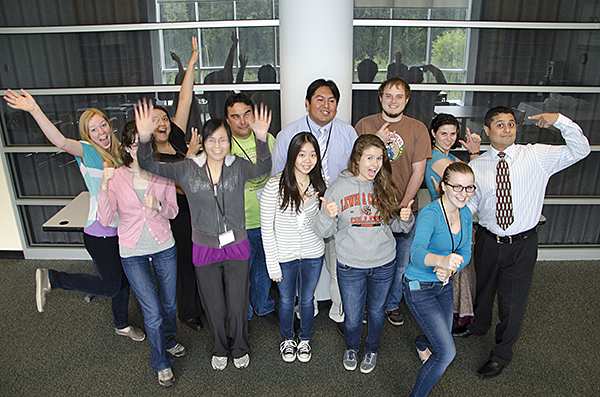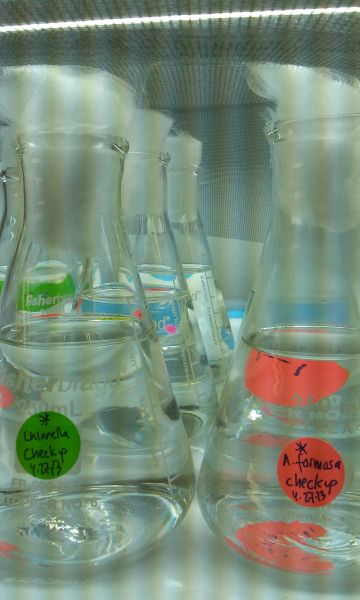Knowledge Transfer
Member Login
Recent Blog Posts
Views expressed are those of the author and do not necessarily reflect those of CMOP or OHSU. All content posted here must be consistent with OHSU's Acceptable Use of Computing and Telecommunications Resources policy.


 The picture on the left shows Chlorella vulgaris and Asterionella formosa cultures growing in our cold room. Two different contaminant experiments are taking place in these flasks. In one of them we have added the plasticizer Bisphenol A (BPA) to the growth medium and in the other one we have added the detergent by-product 4-para-Nonylphenol (NP).
The picture on the left shows Chlorella vulgaris and Asterionella formosa cultures growing in our cold room. Two different contaminant experiments are taking place in these flasks. In one of them we have added the plasticizer Bisphenol A (BPA) to the growth medium and in the other one we have added the detergent by-product 4-para-Nonylphenol (NP).


